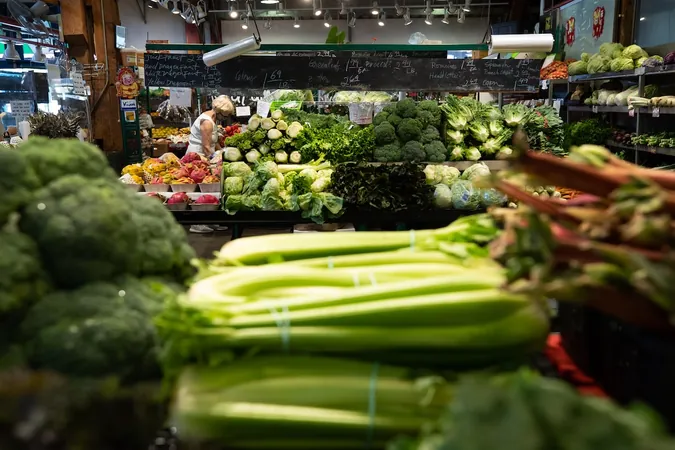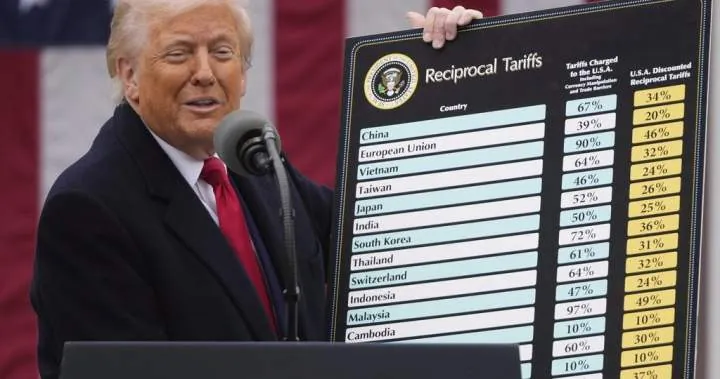
Canada Lifts Tariffs on U.S. Goods: What This Means for Consumers
2025-08-24
Author: William
Trade Tensions Ease as Countertariffs Lifted
In a significant shift, the Canadian government has announced the removal of most retaliatory tariffs on American goods, a move expected to provide some relief for consumers. However, as trade analysts note, the prevailing 'buy Canadian' sentiment may continue to dampen demand for U.S. products.
Prime Minister Mark Carney revealed that Ottawa will align its tariff policy with the U.S., imposing tariffs only on goods not compliant with the United States-Mexico-Canada Agreement (USMCA). This change is set to take effect on September 1, although countertariffs on key sectors such as steel, aluminum, and automotive will remain.
The Background: A Response to Trump's Trade War
The Canadian government initially imposed countertariffs on $30 billion worth of U.S. goods back in March, as a retaliatory measure against President Trump’s aggressive trade policies aimed at Canada.
While these measures were intended to respond to U.S. tariffs, Canadian businesses warned that the ultimate burden would fall on consumers. Notably, Loblaw, a major grocery chain, started labeling U.S. products affected by these tariffs to help shoppers make informed decisions.
Consumers to Benefit—But How Much?
Experts assert that the previous tariffs have had a limited impact on prices. However, lifting these tariffs is likely to ease costs for certain products, especially food. BMO's chief economist Douglas Porter pointed out that the selective nature of Canada's tariffs helped mitigate inflation.
"Many imported goods actually came from other countries, which were not affected by tariffication, and even some U.S. imports avoided tariffs," noted Colin Mang, an economics professor at McMaster University.
Rural Communities Hit Hard by Tariffs
For consumers in rural and Northern communities, where options are limited, the decision to lift countertariffs could bring much-needed relief. Gary Sands, from the Canadian Federation of Independent Grocers, emphasized that independent grocers in these regions have been particularly affected and are ready to pass savings onto consumers.
Price Cuts Ahead—But Not Immediately
University of Guelph's Mike von Massow cautioned that consumers might not see immediate price drops after the tariffs are lifted. However, he noted that grocery chains are currently sensitive to public criticism regarding food pricing and may adjust their strategies accordingly.
Mixed Reactions in the Grocery Sector
Loblaw has indicated a commitment to transparency regarding price changes, stating that as inventory bought under the tariff system sells out, consumers should see prices decline. Meanwhile, Metro has been exploring how much of its recent price increases were linked to tariffs, with a spokesperson asserting, "it's too soon to tell" what the effects of the removal will be.
Consumer Sentiment Remains Fickle
Despite the lifting of countertariffs, many Canadians are still inclined to support local products over U.S. ones due to the trade war's legacy. Even with a thaw in trade relations, many consumers maintain a preference for Canadian goods, which may continue to suppress U.S. product sales in Canada.
Ongoing Challenges and Potential Price Increases
Interestingly, while the countertariffs are being lifted, the broader implications of the U.S. trade war still linger. Multinational companies may offset the costs of U.S. tariffs globally, meaning Canadian consumers could still face higher prices on select goods.
As BMO's Porter observed, the automotive sector may experience price increases, as U.S. tariffs affect almost all vehicles imported into the U.S., with companies distributing those costs worldwide rather than solely within the U.S.
Conclusion: A Complex Landscape Ahead
As Canada moves to lift its countertariffs, consumers can expect mixed impacts on pricing. While some relief is anticipated, the continuing effects of a trade war and shifting consumer sentiments may complicate the landscape, leaving many wondering about the future costs of both American and Canadian goods.









 Brasil (PT)
Brasil (PT)
 Canada (EN)
Canada (EN)
 Chile (ES)
Chile (ES)
 Česko (CS)
Česko (CS)
 대한민국 (KO)
대한민국 (KO)
 España (ES)
España (ES)
 France (FR)
France (FR)
 Hong Kong (EN)
Hong Kong (EN)
 Italia (IT)
Italia (IT)
 日本 (JA)
日本 (JA)
 Magyarország (HU)
Magyarország (HU)
 Norge (NO)
Norge (NO)
 Polska (PL)
Polska (PL)
 Schweiz (DE)
Schweiz (DE)
 Singapore (EN)
Singapore (EN)
 Sverige (SV)
Sverige (SV)
 Suomi (FI)
Suomi (FI)
 Türkiye (TR)
Türkiye (TR)
 الإمارات العربية المتحدة (AR)
الإمارات العربية المتحدة (AR)